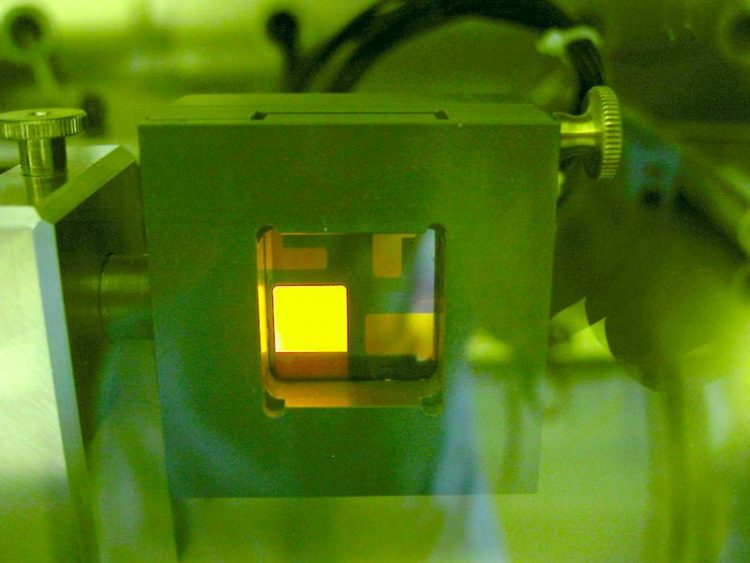Improved stability of plastic light-emitting diodes

Orange-emitting polymer light-emitting diode © MPIP
Monitor screens and smartphones that can be rolled and folded up are applications that could become possible in the future thanks to the development of polymer (plastic) based semiconductors.
Electronics from these conducting plastics pave the way for affordable, flexible and printable electronic components. A major obstacle hindering the market introduction of plastic based light-emitting diodes (PLEDs) is their relatively limited stability.
After a few months of continuous operation their light-output starts to decrease. In spite of many investigations in both industry and academic laboratories the cause of this degradation effect is only poorly understood.
Researchers at the Max Planck Institute for Polymer Research have recently discovered the mechanism causing the PLED degradation.
During degradation defects are formed that strongly reduce the current injected from the positive electrode. Furthermore, these defects lead to unwanted losses in the light generation processes.
The research results are published in the latest edition of the scientific journal Nature Materials.
By using a mixture of two polymers (plastics) the effect of the defects can be strongly suppressed, leasing to improved stability of the PLEDs.
Professor Paul Blom, Director at the Max Planck Institute for Polymer Research and head of its department for Molecular Electronics, and his research team are confident that the improved stability will boost the applicability of plastic light-emitting diodes.
Media Contact
All latest news from the category: Power and Electrical Engineering
This topic covers issues related to energy generation, conversion, transportation and consumption and how the industry is addressing the challenge of energy efficiency in general.
innovations-report provides in-depth and informative reports and articles on subjects ranging from wind energy, fuel cell technology, solar energy, geothermal energy, petroleum, gas, nuclear engineering, alternative energy and energy efficiency to fusion, hydrogen and superconductor technologies.
Newest articles

High-energy-density aqueous battery based on halogen multi-electron transfer
Traditional non-aqueous lithium-ion batteries have a high energy density, but their safety is compromised due to the flammable organic electrolytes they utilize. Aqueous batteries use water as the solvent for…

First-ever combined heart pump and pig kidney transplant
…gives new hope to patient with terminal illness. Surgeons at NYU Langone Health performed the first-ever combined mechanical heart pump and gene-edited pig kidney transplant surgery in a 54-year-old woman…

Biophysics: Testing how well biomarkers work
LMU researchers have developed a method to determine how reliably target proteins can be labeled using super-resolution fluorescence microscopy. Modern microscopy techniques make it possible to examine the inner workings…





















